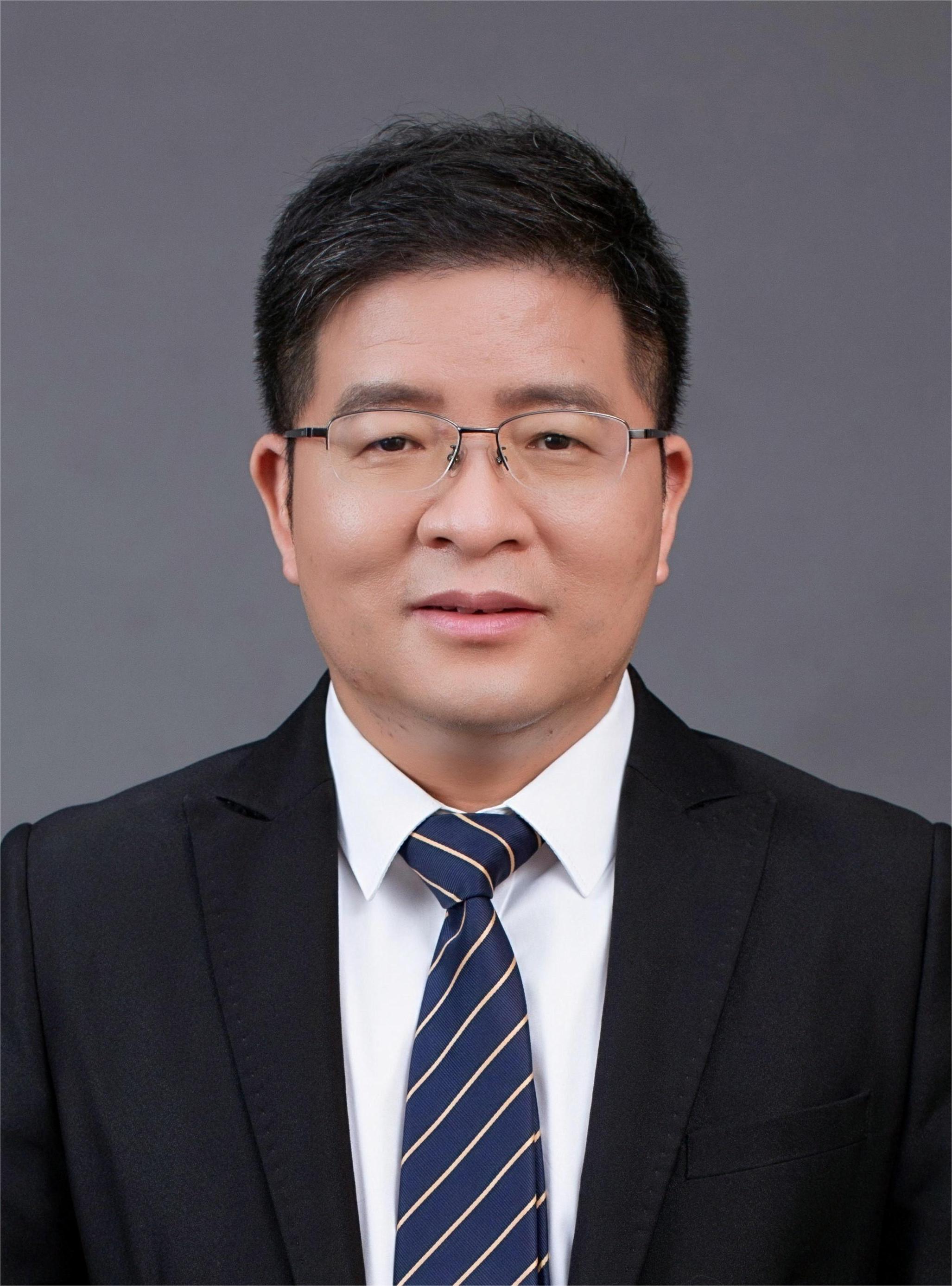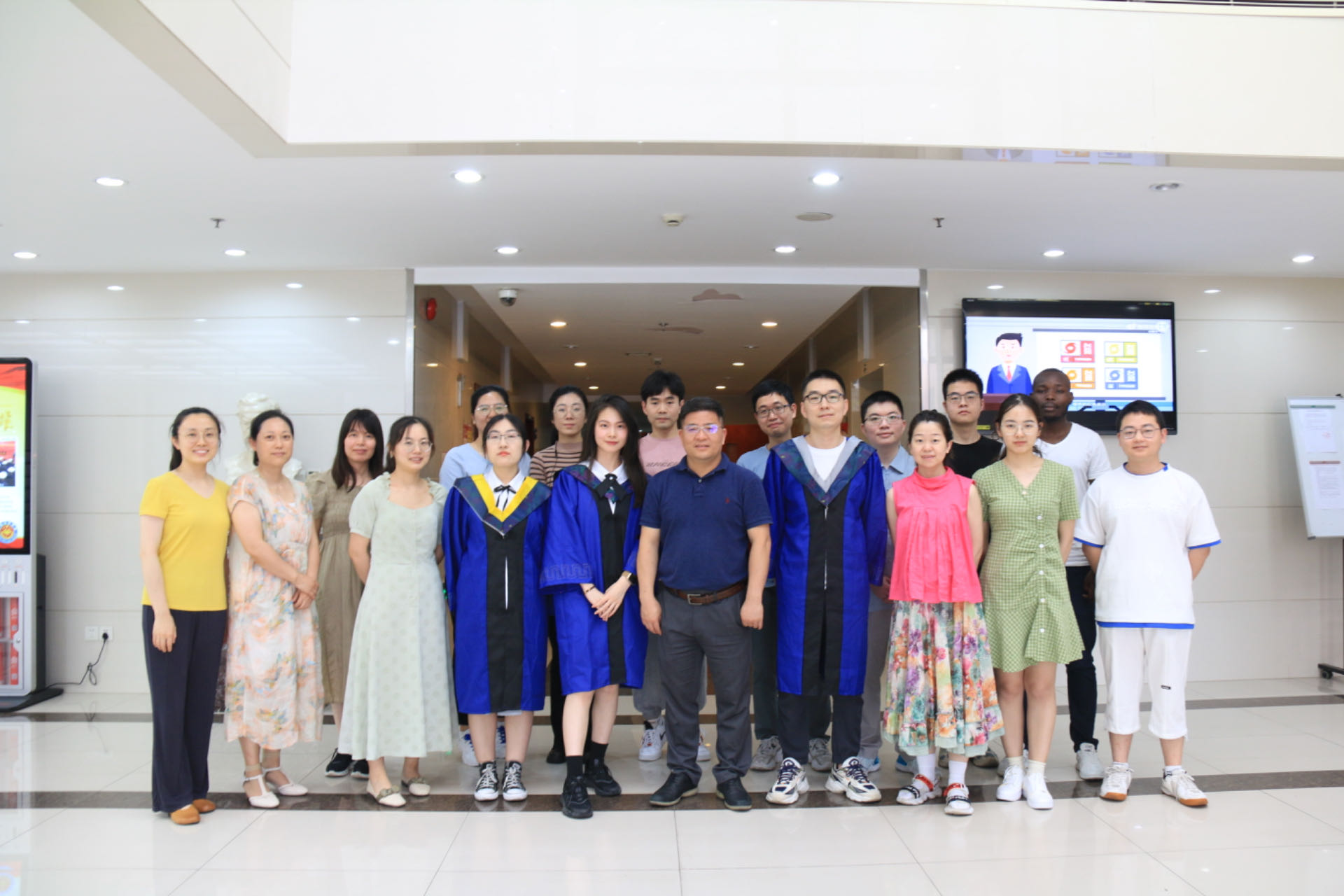
CHEN ChangbinPh.D.
- Academic title:Principal Investigator
- Discipline:Pathogenic Fungus
- Departments:Pathogenic Fungal Infection and Host Immunity
- Phone:86-21-54923055
- E-mail:cbchen@siii.cas.cn
- Mailing Address:Life Science Research Building, 320 Yueyang Road, Xuhui District, Shanghai 200031, P.R. China
Academic Experience
2013/07-Present Principal Investigator, Unit of Pathogenic Fungal Infection and Host Immunity, Shanghai Institute of Immunity and Infection, CAS
2011/07-2013/06 Assistant Specialist, Department of Microbiology & Immunology, The University of California, San Francisco
2010/01-2011/06 Postdoctoral Fellow, Department of Microbiology & Immunology, The University of California, San Francisco
2005/07-2010/12 Postdoctoral Fellow, Department of Biochemistry & Biophysics, The University of California, San Francisco
2004/09-2005/06 Research Technologist, Department of Plant Pathology, The University of Nebraska-Lincoln
Education
1998/08-2004/08 Ph.D. The University of Nebraska-Lincoln, USA
1995/09-1998/07 M.S. Institute of Plant Physiology and Ecology, CAS
1990/09-1995/07 B.S. Shanghai Fudan University
In the field of basic research, our focus is on the host-fungal interaction, mycobiota and disease, as well as development of novel anti-fungals and vaccines. We aim to identify key signals involved in fungal commensal-pathogen transition, understand the regulation of virulence gene expression and host anti-fungal immune mechanisms. Our goal is to provide a theoretical basis for the control and prevention of fungal infections and discover new drug targets for antifungal medications. Our key areas of investigation include:
i. Signal transduction pathways involved in fungal commensal-pathogen transition
ii. Fungal effectors and host immune responses against fungal infection
iii. Molecular mechanisms by which fungi breach the blood-brain barrier in host organisms
iv. The impact of gut and genital microbiota on fungal infections and host immunity
v. Screening for novel antifungal drugs and investigating their mechanisms of action
vi. Epigenetic regulatory mechanisms of fungal drug resistance
In the realm of clinical translation, our primary focus is on the prevention and treatment of clinically significant infectious diseases. This encompasses research on microbial drug resistance, co-infections during organ transplantation, gynecological disorders caused by fungal infections, skin infections, meningitis, sepsis, and more. We employ techniques such as metagenomics, proteomics, transcriptome, and metabolome, in conjunction with animal models, to develop new pathogen diagnostic technologies and screen for novel lead compounds in the fight against infectious diseases.
Selected publications (#equal contribution)
1. Liu N#, Yi C#, Wei L#, Zhou J, Jiang T, Hu C, Wang L, Wang Y, Zou Y, Zhao Y, Zhang L, Nie Y, Zhu Y, Yi X, Zeng L, Li J, Huang X, Ji H, Kozlakidis Z, Zhong L, Heeschen C, Zheng X, Chen C, Zhang P, Wang H. (2023) The intratumor mycobiome promotes lung cancer progression via myeloid-derived suppressor cells. Cancer Cell. 41, 1-18.
2. Wang Y#, Mao Y#, Chen X, Huang X, Jiang Z, Yang K, Tian X, Jiang T, Zou Y, Ma X, Xu C, Zhou Z, Wu X, Pan L, Liang H, Zhong L, Chen C. (2023) Homeostatic control of an iron repressor in a GI tract resident. Elife. 25(12): e86075.
3. Wang Y#, Zou Y#, Chen X, Yin Z, Zhang B, Xu Y, Zhang Y, Huang X, Yang W, Xu C, Jiang T, Zhou Z, Ji Y, Liu Y, Hu L, Zhou J, Liu N, Huang G, Chen C, Zhou D. (2022) Innate immune responses against the fungal pathogen Candida auris. Nat Commun. 13(1):3553.
4. Wang Y, Zhou J, Zou Y, Chen X, Liu L, Qi W, Huang X, Chen C, Liu N. (2022) Fungal commensalism modulated by a dual action phosphate transceptor. Cell Rep. 38(4):110293.
5. Liu N, Zhou J, Jiang T, Tarsio M, Yu F, Zhang X, Qi W, Liu L, Tan J, Wei L, Ding J, Li J, Zeng L, Ren B, Huang X, Peng Y, Cao Y, Lopez-Ribot J, Zhao Y, Zhang X, Kane P, Chen C, Wang H. (2022) A dual action small molecule enhances azoles and overcomes resistance through co-targeting Pdr5 and Vma1. Translational Research. 247: 39-57
6. Liu L#, Jiang T#, Zhou J, Mei Y, Li J, Tan J, Wei L, Li J, Peng Y, Chen C, Liu N, Hui Wang. (2021) Repurposing the FDA-approved anticancer agent ponatinib as a fluconazole potentiator by suppression of multidrug efflux and Pma1 expression in a broad spectrum of yeast species. Microbial Biotechnology. 0(0), 1–17.
7. Chen C and Huang X. (2018) Candida albicans Commensalism and Human Diseases. In book: Mechanisms Underlying Host-Microbiome Interactions in Pathophysiology of Human Diseases. E.d. Jun Sun and Dudeja PK. Physiology in Health and Disease. Springer. ISBN 978-1-4939-7533-
8. Tian Y#, Gao N#, Ni Q, Mao Y, Dong D, Huang X, Jiang C, Li Z, Zhang L, Wang X, Peng Y and Chen C. (2018) Sequence modification of the master regulator Pdr1 interferes with its transcriptional autoregulation and confers altered azole resistance in Candida glabrata. FEMS Yeast Research, 18(4).
9. Huang X#, Chen X#, He Y#, Yu X, Li S, Gao N, Niu L, Mao Y, Wang Y, Wu X, Wu W, Wu J, Zhou D, Zhan X, Chen C. (2017) Mitochondrial complex I bridges a connection between regulation of carbon flexibility and gastrointestinal commensalism in the human fungal pathogen Candida albicans. PLOS Pathogens. 13(6): e1006414.
10. Gao, N., and Chen, C. (2016) Candida Infections: an update on host immune defenses and anti-fungal drugs. IDTM. Review.
11. Pande, K., Chen, C. and Noble, S. M. (2013) Passage through the mammalian gut triggers a phenotypic switch required for Candida albicans commensalism. Nature Genetics. 45(9):1088-91
12. Chen, C. and Noble, S. M. (2012) Post-transcriptional regulation of the Sef1 transcription factor controls the virulence of Candida albicans in its mammalian host. PLOS Pathogens, 8(11): e1002956.
13. Chen, C#.,Pande, K#., French, S. D., Tuch, B. B. and Noble, S. M. (2011) A unique iron homeostasis regulatory circuit with reciprocal roles in Candida albicans commensalism and pathogenesis. Cell Host & Microbe. 10(2): 118-35.
14. Dumesic, P., Natarajan, P., Chen, C., Drinnenberg, A., Schiller, B., Moresco, J., Thompson, J., Yates, J., Bartel, D., and Madhani H. (2013) Stalled spliceosomes are a signal for RNAimediated genome defense. Cell: 152(5):957-968.
15. Liu, O. W., Chun, C. D., Chow, E. D., Chen, C., Madhani, H. D. and Noble, S. M. (2008) Systematic gene deletion and analysis of virulence in the human fungal pathogen Cryptococcus neoformans. Cell 135(1): 174-188.
16. Chen, C. and Dickman, M. B. (2005) Proline suppresses apoptosis in the fungal pathogen Colletotrichumtrifolii. PNAS 102(9): 3459-3464
17. Deng Z., Ma S., Zhou H., Zang A., Fang Y., Li T., Shi H., Liu M., Du M., Taylor P., Zhu H., Chen J., Meng G., Li F., Chen C., Zhang Y., Jia X., Lin X., Zhang X., Pearlman E., Li X., Feng G., and Xiao H. (2015) Shp2 mediates C-type lectin receptor-induced Syk activation and anti-fungal Th17 responses. Nature Immunology. 16(6):642-52.
18. Xie X., Li F., Wang Y., Lin Z., Cheng X., Liu J., Chen C., and Pan L. (2015) Molecular basis of ubiquitin recognition by the autophagy receptor CALCOCO2. Autophagy.11(10):1775-89.
19. Chen M., Xing Y., Lu A., Fang W., Sun B., Chen C., Liao W., and Meng G. (2015) Internalized Cryptococcus neoformans activates the canonical Caspase-1 and the noncanonical Caspase-8 inflammasomes. J. Immunol. 195(10):4962-72.
20. Guo C, Chen M, Fa Z, Lu A, Fang W, Sun B, Chen C, Liao W, Meng G. (2014) Acapsular Cryptococcus neoformans activates the NLRP3 inflammasome. Microbes Infect. 16(10): 845-54.
21. Georgette, C., Chen, C., Shih, S., et al., (2011) A site specific acetylation mark on the essential RSC chromatin remodeling complexpromotes resistance to replication stress. PNAS 108(26):10620-10625
22. Chen, C. and Dickman, M. B. (2005) cAMP blocks MAPK activation and sclerotial development via Rap-1 in a PKA-independent manner in Sclerotiniasclerotiorum. Molecular Microbiology 55(1): 299-311.
23. Chen, C., and Dickman, M. B. (2004) Dominant active Rac and dominant negative Rac revert the dominant active Ras phenotype in Colletotrichumtrifolii by distinct signaling pathways. Molecular Microbiolology51: 1493-1507.
24. Chen, C., Ha, Y-S., Min, J-Y., Memmott, S. D., and Dickman, M. B. (2006) Cdc42 is required for proper growth and development in the fungal pathogen Colletotrichumtrifolii. Eukaryotic Cell 5(1): 155-166.
25. Scheffer, J., Chen, C., Heidrich, P., Dickman, M. B., and Tudzynski, P. (2005) A CDC42 homologue in Clavicepspurpurea is involved in vegetative differentiation and is essential for pathogenicity. Eukaryotic Cell 4(7): 1228-1238.
26. Chen, C., and Dickman, M. B. (2002) Colletotrichumtrifolii TB3 kinase, a COT1 homolog, is light inducible and becomes localized in the nucleus during hyphal elongation. Eukaryotic Cell 1: 626-633.
27. Chen, C., Harel, A., Gorovoits, R., Yarden, O., and Dickman, M. B. (2004) MAPK regulation of sclerotial development in Sclerotiniasclerotiorum is linked with pH and cAMP sensing. Molecular Plant-Microbe Interactions 17: 404-413.
28. Kim, H.J., Chen, C., Kabbage, M. and Dickman, M.B. (2011) Identification and Characterization of Sclerotiniasclerotiorum NADPH Oxidases. Applied and Environmental Microbiology 77(21):7721-9.
29. Chen, C., Wanduragala, S., Becker, D. F., and Dickman, M. B. (2006) A tomato QM-like protein protects Saccharomyces cerevisiae cells against oxidative stress by regulating intracellular proline levels. Applied and Environmental Microbiology 72(6): 4001-6.
Principal Investigator: CHEN Changbin,
Associate professor: HUANG XinHua
Assistants: ZHANG Lihong, ZHOU Zili; LIU Shuai; XU Chaoyue
Postdoctoral Fellow: WANG Yuanyuan
Ph.D. students: ZOU Yun, Munika Moses, XIONG Sichu, ZHANG Luyao, LI Kunlin, ZHANG Yuping, CHEN Guangshen
M.S. students: LIANG Chen, JIANG Zaijie, WANG Di


